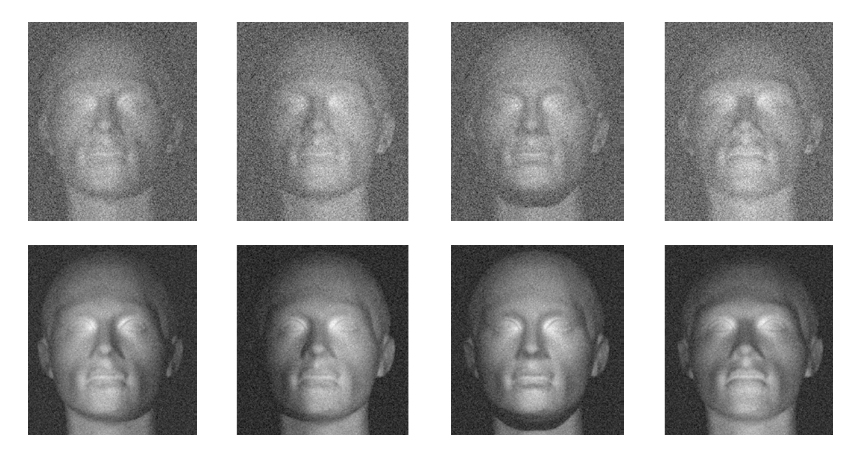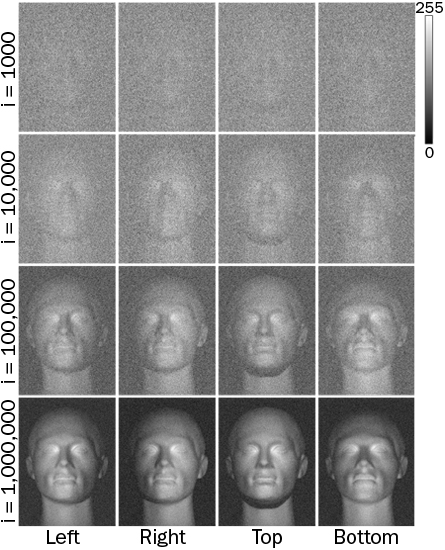3-D imaging, pixel by pixel
Easy technique uses inexpensive equipment to make three-dimensional rendering

B. Sun et al/Science 2013
View the video
A network of four single-pixel sensors has done what a 20-million-pixel digital camera cannot: create a three-dimensional image of an object.

Producing a 3-D image is not easy. Filming a 3-D movie, for example, requires two expensive cameras plus complex software that stitches 2-D images from the cameras together.
Physicist Baoqing Sun of the University of Glasgow in Scotland and colleagues accomplished the feat with a couple of cheap parts and equipment available in most high school classrooms. They used a projector to illuminate a mannequin head with a predetermined sequence of speckled light patterns. Some of the light reflected off the head and struck four single-pixel detectors positioned around the projector, which tallied the amount of light they collected for each illumination pattern.
After collecting light readings for thousands of patterns over several minutes, Sun’s team was able to construct four vivid black-and-white 2-D images of the head, one from each detector. Finally, a simple computer algorithm combined the readings from the four detectors into a 3-D reconstruction of the head, Sun and his team report in the May 17 Science.
The researchers’ ultimate goal goes beyond 3-D reconstructions. While digital cameras are limited to capturing light within the visible spectrum, single-pixel detectors can pick up other kinds of radiation. That could make Sun’s system useful for imaging tumors beneath the skin with X-rays or underground natural gas deposits with infrared.
A clever setup of a classroom projector, computer and four single-pixel sensors enabled researchers to render a 3-D image of a mannequin head.
Credit: Optics Group, University of Glasgow







